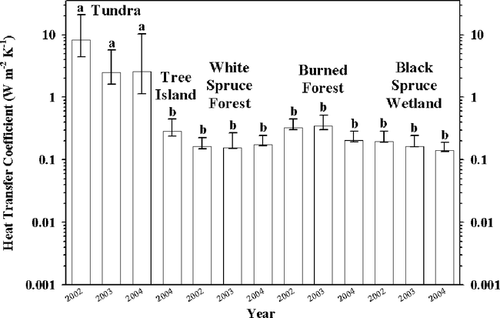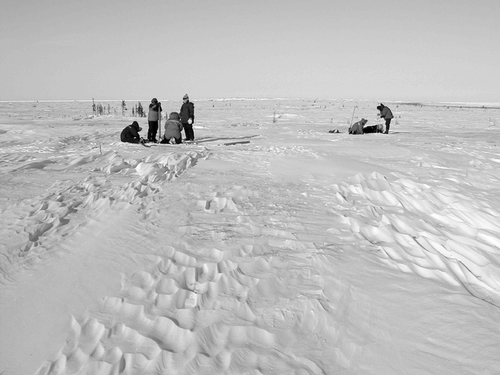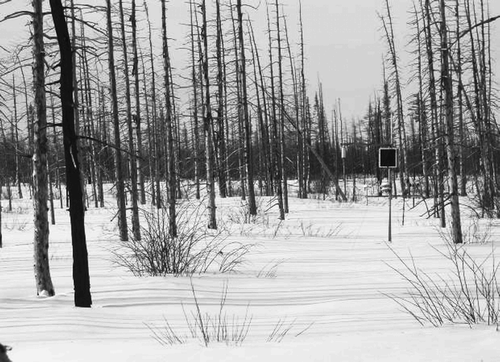Figures & data
Figure 1 The long-term environmental monitoring sites extended from forested and burned sites 15 km inland from the coast. Biomes separated by dotted lines. Coastal locations were dominated by tundra. Sites sampled: TUN, Tundra; TIS, Forest-Tundra Tree Island; WSU, White Spruce Upland Forest; BSW, Black Spruce Wetland; and BFR, Burned Forest (spruce).
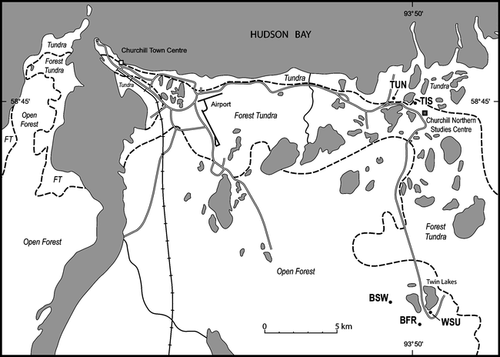
Table 1 Sample sizes and canopy characteristics of the long-term environmental monitoring sites, Churchill, Canada.
Figure 2 Within-site snowpack depth was similar over the three years but differed among sites. Arithmetic mean with error bar cap at one standard deviation and tick for the median. Tundra and Tree Island (Forest-Tundra Tree Island), White Spruce Forest (upland), and Burned Forest (upland). Different letters indicate significant differences (p < 0.001).
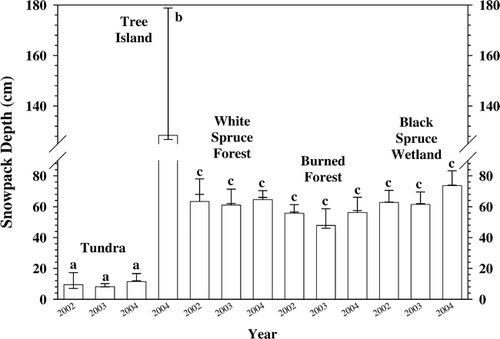
Figure 3 The Tundra site had the greatest within-site variation in snowpack density, and it was significantly higher in the first year. The forest sites and the burned forest had similar snowpack density and they were similar to the tundra in the last two years. Arithmetic mean with error bar cap at one standard deviation and tick for the median value. Different letters indicate significant differences (p < 0.001).
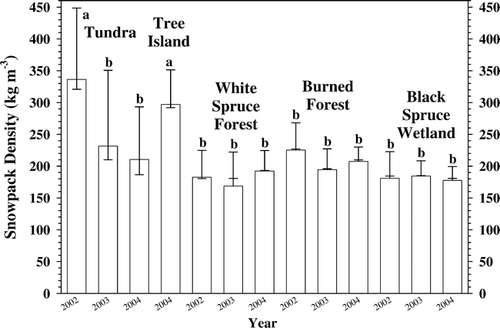
Figure 4 Within-site variation of snow water equivalent (SWE) was greatest at Forest-Tundra Tree Island. The Tundra values were significantly less than all other sites and the forested and burned sites were similar. Between-year variations were not significant. Arithmetic mean with error bar cap at one standard deviation and tick for the median value. Different letters indicate significant differences (p < 0.001).
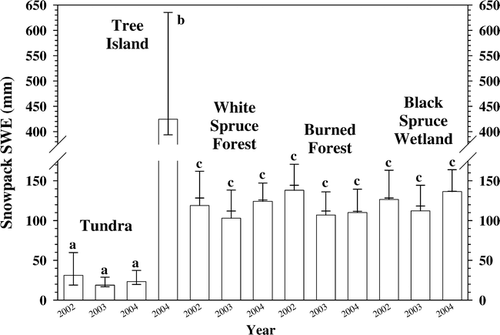
Figure 5 Heat transfer coefficients were at least an order of magnitude higher on the Tundra than at all other sites. Arithmetic mean with error bar cap at one standard deviation and tick for the median value. Different letters indicate significant differences (p < 0.001).
